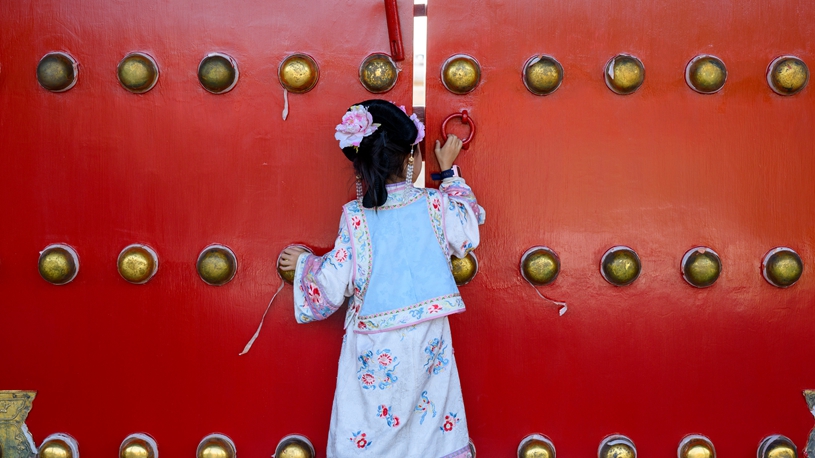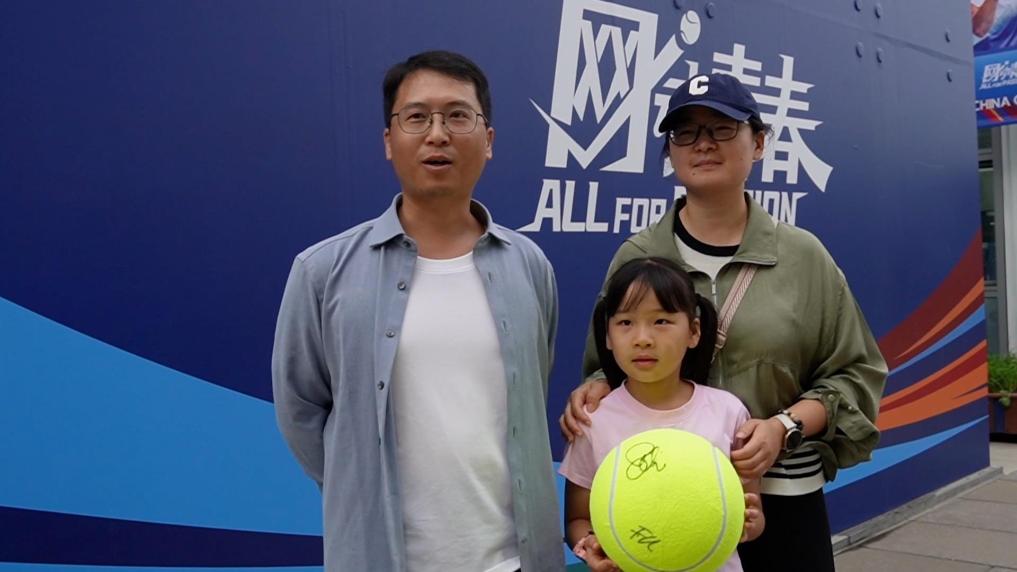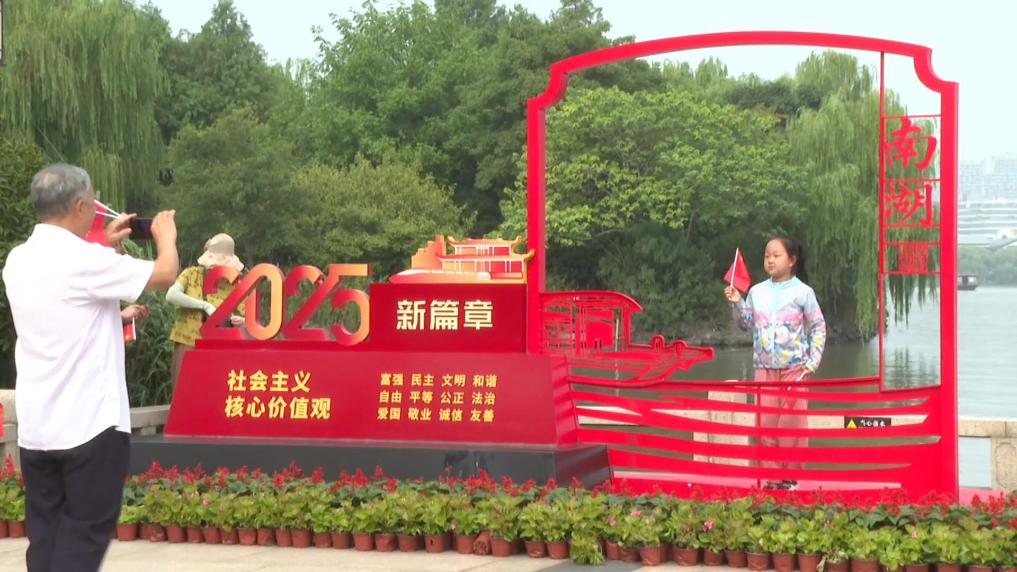Feature: From games to getaways, sports tourism fuels fresh growth in China
Source: Xinhua
Editor: huaxia
2025-10-06 16:04:15

by sportswriter He Leijing
NANJING, Oct. 6 (Xinhua) -- For football fan Wang Jixiang, few things rival the thrill of flying more than 1,000 kilometers to watch a live match - especially when it doubles as a family getaway.
During China's eight-day National Day and Mid-Autumn Festival holiday, Wang and his family left their home in Liaoning Province for Nanjing, Jiangsu Province, to catch a much-anticipated quarterfinal of the wildly popular Su Super League.
"The game was absolutely worth it!" Wang said, still beaming after witnessing Nanjing's penalty shootout victory over Lianyungang on Saturday. "It's our first trip built around a football game, and it's really unforgettable."
Launched this year, the Su Super League - an amateur football tournament pitting 13 cities from across Jiangsu against one another - has taken China's grassroots football scene by storm. Over the eight-day holiday, four knockout matches were scheduled, with the final set for November.
The league's popularity rivals that of professional competitions. Saturday's match alone drew 61,355 spectators, setting a new attendance record for amateur football in China. Across 13 rounds of regular-season play, total attendance has exceeded 2.11 million, averaging 27,000 per game.

But the league's allure goes beyond football. Its matches have become magnets for travelers, inspiring fans to add "watching a game" to their holiday itineraries - or even to choose destinations based on where the next match is played.
"Watching the match was a key reason we came to Nanjing," Wang said. "We're also taking time to explore the city. And the game ticket even gets us discounts at scenic spots and hotels."
According to data from Nanjing's commerce department, the city welcomed 14.06 million tourists in the first five days of the holiday, up 13.4 percent year on year. Many of them, like Wang, listed the Su Super League match on their must-see list.
WHEN SPORTS MEETS TRAVEL
In downtown Nanjing, Su Super League fever is visible everywhere - from massive LED screens replaying game highlights to malls running football-themed promotions that lure fans from stadiums to shopping centers.

Following games to new destinations - a rising trend in China's tourism landscape - is helping cities like Nanjing blend sports with leisure and retail. Local authorities have launched ticket-based promotions, allowing visitors to use match stubs for discounts at more than 400 malls and shopping centers.
The strategy is paying off. The first six rounds of the provincial league spurred 38 billion yuan (about 5.3 billion U.S. dollars) in consumption. Saturday's Nanjing quarterfinal boosted retail, dining and hospitality sales in key commercial areas to 870 million yuan, up 6.4 percent from last year.
"The holiday crowd has doubled, and many customers are out-of-towners here for the league game," said Zhou Xiaozhou, owner of a bar in Nanjing. For those unable to secure stadium tickets, sports bars and malls with giant screens have become alternative fan hubs. "The local excitement levels are even crazier than during the World Cup," Zhou added.

Outdoor districts across Jiangsu have transformed into open-air fan zones, complete with large projection screens and hundreds of seats. In Wuxi, a lakeside commercial street famous for bars and barbecue joints boasts more than 40 big screens, ensuring no fan misses a goal while savoring local flavors.
Host cities have also rolled out the red carpet for visitors, offering free scenic spot access to residents from rival cities. Yancheng even announced it would give out complimentary local snacks - like its signature egg pancakes - to ticket-holding fans.
"The 'ticket economy' links sports, tourism and commerce," said Si Zengchuo, a professor at Jiangsu Normal University. "It's a model of one-stop experiences - watch the match, tour the city and shop - that's now spreading nationwide."

IGNITING SPORTS ECONOMY
Across China, the holiday period has turned into a festival of sports. At least nine provincial football leagues staged more than 80 matches, echoing the Su Super League's success and highlighting how local tournaments can stimulate sports consumption.
In Chongqing, more than 50 local events were staged, anchored by 30 national sports tourism routes and bases spanning mountain, water, air and winter sports, turning outdoor recreation into a new driver of holiday spending.
Major professional tournaments also added momentum. Tickets for the WTT China Grand Smash, China Open and Shanghai Masters sold out rapidly, with fans flocking to Beijing and Shanghai to watch world-class athletes. As of Oct. 3, the China Open and WTT events reported sales of 88 million yuan and 86 million yuan, respectively - both record highs.
Shanghai further fueled demand by distributing 20 million yuan in sports consumption vouchers ahead of the holiday, with additional coupons for swimming, badminton and winter sports.
Experts say the surge of sports-related spending reflects a broader shift in China's consumer economy. According to the government's latest policy blueprint, the total output of China's sports industry is expected to exceed seven trillion yuan by 2030, driven by event-based consumption and the fusion of sports, tourism and culture.
"Sports consumption is expanding beyond the arena," said Ding Xiang, associate professor at Nanjing University. "The emotional and experiential value of events is reshaping consumer behavior. People don't just want to watch - they want to be there, to feel it, to live it."
"In the future, we'll see more events like the Su Super League, where fans don't just attend matches, but truly immerse themselves in the life and rhythm of the host cities," Ding added. ■













Comments